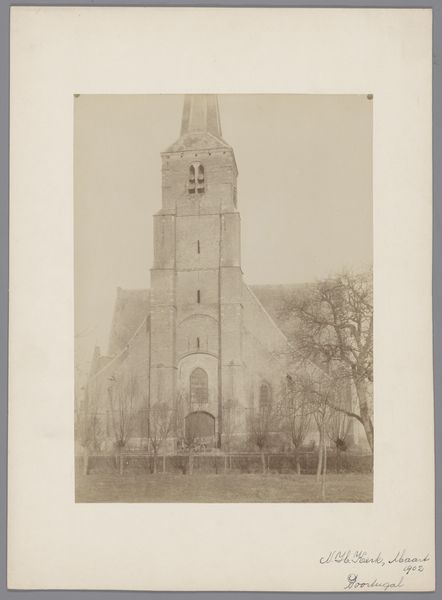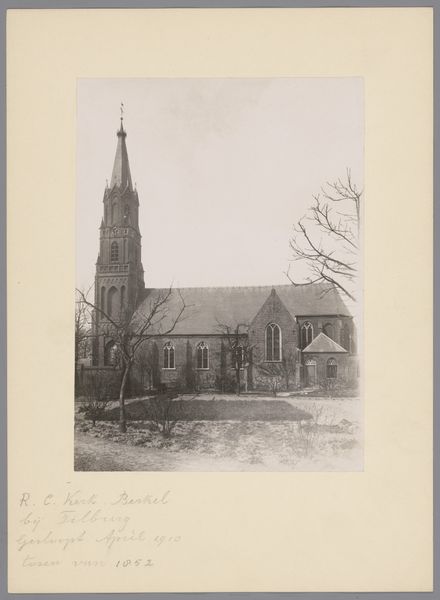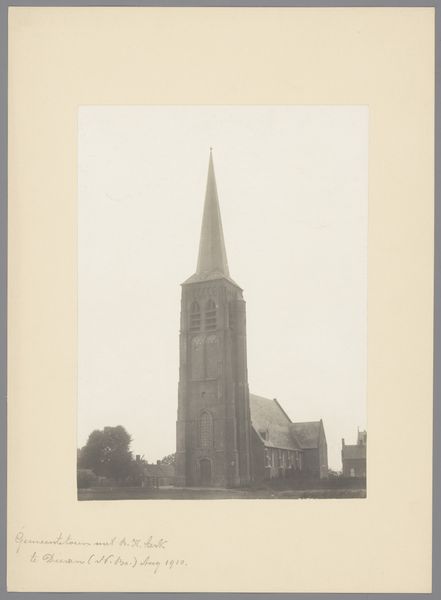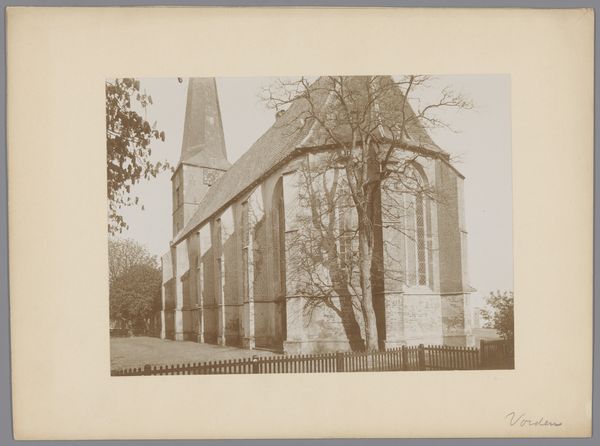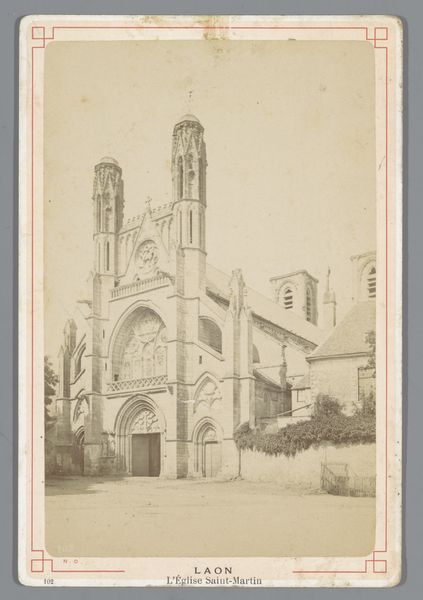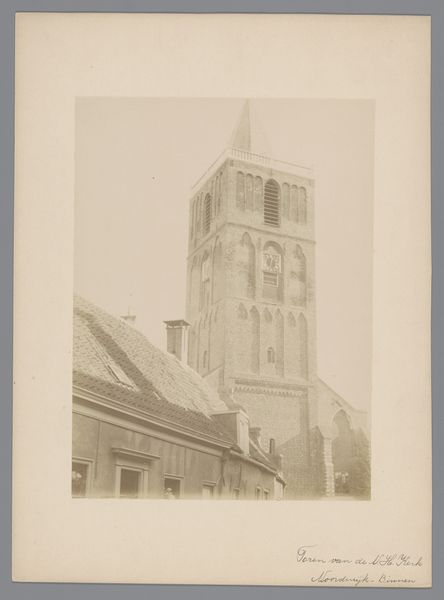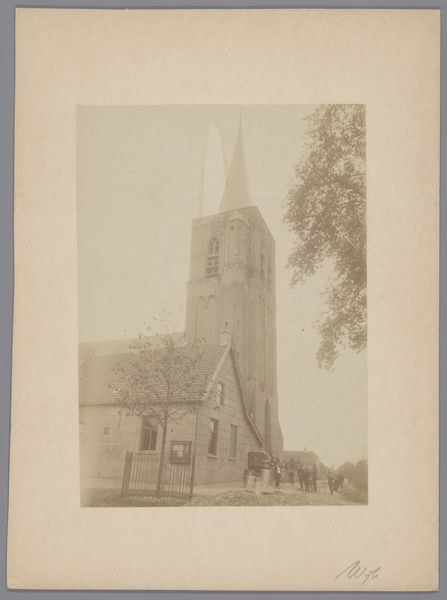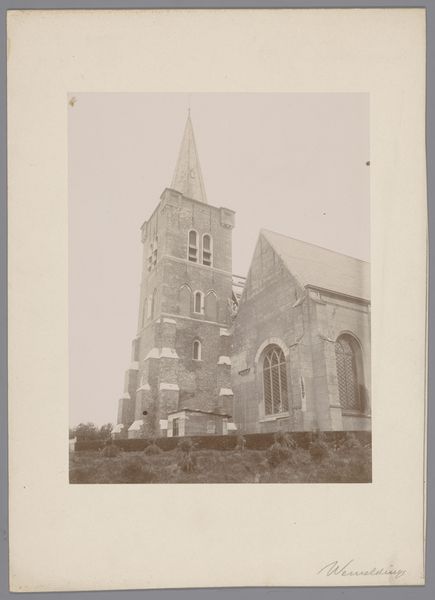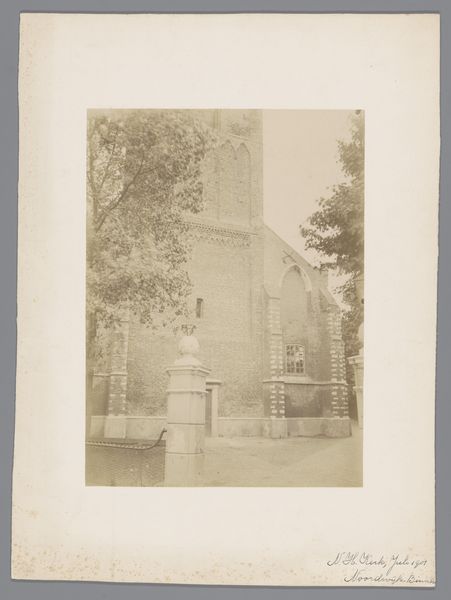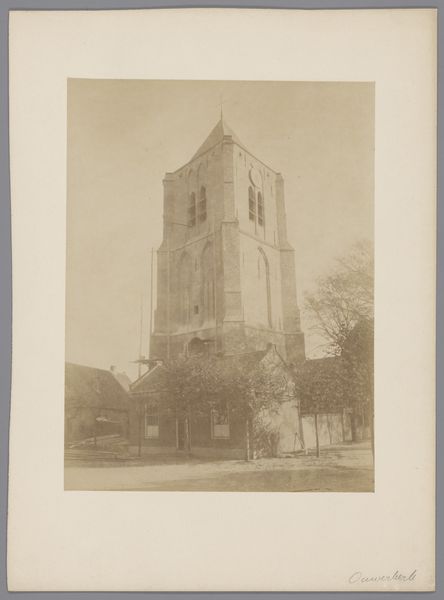
Exterieur van Kirkby Lonsdale Church, met op de voorgrond grafstenen 1899
0:00
0:00
photography, albumen-print
#
landscape
#
photography
#
cityscape
#
albumen-print
Dimensions: height 134 mm, width 208 mm
Copyright: Rijks Museum: Open Domain
Editor: So, here we have James Valentine's "Exterieur van Kirkby Lonsdale Church, met op de voorgrond grafstenen," an albumen print from 1899, currently held at the Rijksmuseum. The sepia tones give it this very traditional feel, but also somewhat melancholic considering the tombstones in the foreground. How do you interpret this work within the broader context of landscape photography at the turn of the century? Curator: The inclusion of gravestones speaks volumes about how these photographs functioned within a particular historical context. Remember, the late 19th century was a period heavily invested in ideas of memory and loss, particularly within the expanding British Empire. Valentine wasn’t just capturing a picturesque church; he was implicitly commenting on the relationship between the present, represented by the church's enduring presence, and the past, symbolized by those interred in the foreground. These weren't simply topographical records; they became potent cultural symbols. What might this have meant for viewers at the time? Editor: That's fascinating! It seems so different from just a pretty picture, and changes how it would have been received in a social context. Are you suggesting that photographs of churches were not just about religious faith, but also something larger? Curator: Precisely. The commercialization of photography led to mass production and circulation of images, which had a significant influence on national identity formation. Photos of churches were more than about individual piety; they became representations of cultural stability, history, and British identity, packaged and consumed on a mass scale. Consider where these images would have been circulated - what role did postcards or travelogues play in this understanding? Editor: I guess, thinking about it now, it's less about capturing reality and more about constructing a narrative about what's worth remembering. This photo is very rich with historical meaning; it is much more than what I initially expected. Curator: Indeed. It highlights the power of visual culture in shaping societal beliefs and solidifying particular notions of national heritage. Every choice—subject, composition, and distribution—plays a role in the artwork's ongoing dialogue with its audience.
Comments
No comments
Be the first to comment and join the conversation on the ultimate creative platform.

